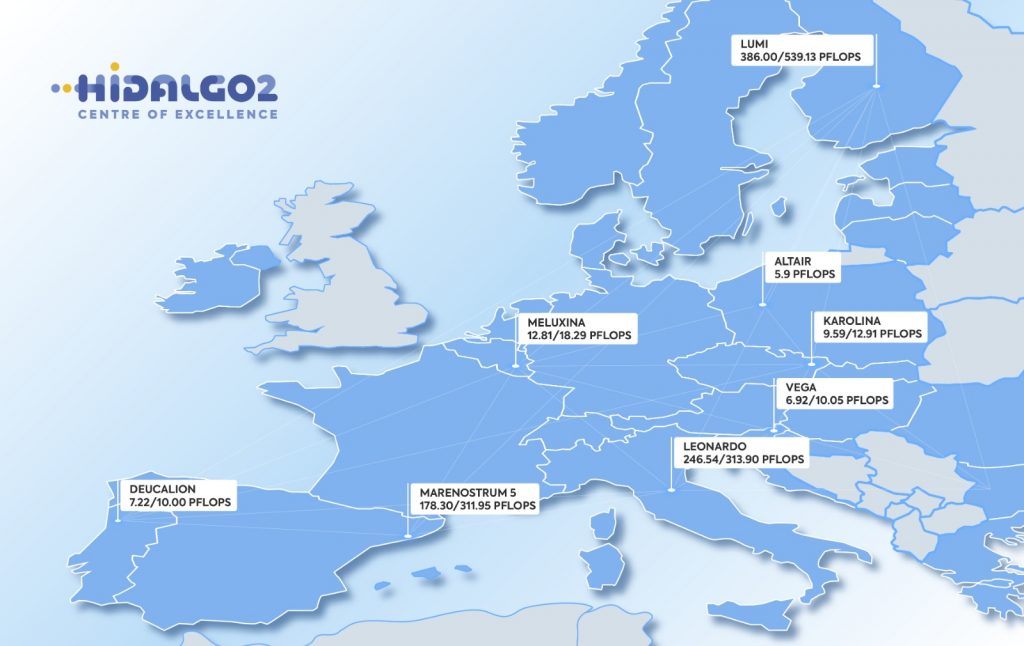
About
HiDALGO2 aims to explore synergies between modelling, data acquisition, simulation, data analysis and visualisation along with achieving better scalability on current and future HPC and AI infrastructures to deliver highly-scalable solutions that can effectively utilise pre-exascale systems. The project focuses on five pilots from the environmental area: improving air quality in urban agglomerations, energy efficiency of buildings, renewable energy sources, wildfires and meteo-hydrological forecasting. The common feature of the modelling of the above simulations is the use of numerical analysis of fluid flows by Computational Fluid Dynamics (CFD) method, which is typically very compute-intensive.

Focus
HiDALGO2 focuses on the following conceptual aspects:
- Technological
- Multidisciplinary
- Socio-scientific
- Teamworking
HiDALGO2 is going to implement a rich set of functionalities, services, model adaptations, co-design benchmarks as well as actively work on establishing collaboration with other projects, initiatives and communities. In order to achieve the relevant impact for the project and measure its success, four above-mentioned categories have been detailed by a set of specific objectives.
Goals
The goals and ambitions of the HiDALGO2 project go far beyond the current state of knowledge and application possibilities, exploring areas that have not been explored so far. Thanks to HiDALGO2, it will be possible to make a qualitative change allowing us to look at the current state of knowledge of the analysed problems from a new perspective. Through the progress achieved in the project, a qualitative leap in terms of scale, resolution and accuracy of the results obtained is expected. This can be compared to using a microscope with much higher magnification to study extremely small organisms. Something that was previously invisible to the researcher suddenly becomes available and allows you to understand the essence of things.
Scalability
HiDALGO2 puts high emphasis on issues related to the scalability of solutions, the best adaptation of the software to the infrastructure (co-design) by using the appropriate benchmarking methodology and algorithmic optimization methods. This enables the efficient use of top-notch HPC systems to simulate complex structures with much greater accuracy not achievable for calculations using Cloud solutions. The quality of our solutions is assessed by uncertainty analysis carried out in ensemble runs mode. HiDALGO2 actively contributes to user communities from the EU by addressing the skills gap and sharing knowledge under organised specialised workflows and training.
Pilots
HiDALGO2 aims to explore synergies between modelling, data acquisition, simulation, data analysis and visualisation along with achieving better scalability on current and future HPC and AI infrastructures to deliver highly-scalable solutions that can effectively utilise pre-exascale systems. The project focuses on four pilots from the environmental area: improving air quality in urban agglomerations, energy efficiency of buildings, renewable energy sources and wildfires.





